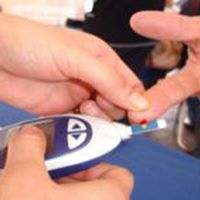Article
Type 2 Diabetes: Rise in Adolescent Hyperfiltration Could Contribute to Diabetic Kidney Disease
Author(s):
“Early diabetic kidney disease (DKD), including increased albumin excretion and renal hyperfiltration (HF), is common in youth with type 2 diabetes,†a collaborative team of researchers began in a poster session at the American Diabetes Association (ADA 2016) 76th Scientific Sessions in New Orleans, Louisiana.

“Early diabetic kidney disease (DKD), including increased albumin excretion and renal hyperfiltration (HF), is common in youth with type 2 diabetes,” a collaborative team of researchers began in a poster session at the American Diabetes Association (ADA 2016) 76th Scientific Sessions in New Orleans, Louisiana.
DKD accounts for a substantial amount of premature deaths and hyperfiltration is an early sign of the condition. Previous research showed that insulin sensitivity is linked to hyperfiltration and albuminuria (presence of albumin in urine) in younger patients. Therefore, first author Petter Bjornstad, MD, from the University of Colorado and colleagues worked to identify the prevalence of hyperfiltration as well as the connection between insulin sensitivity, albumin excretion, and hyperfiltration in adolescents.
In the TODAY trial, the researchers looked at 532 adolescents with type 2 diabetes (ages 10 to 17, average being 14). The cohort was 64% female and consisted of 43% Hispanic, 34% African American, and 20% Caucasian. The average patient had a body mass index (BMI) of 34.7 kg/m², systolic blood pressure of 113 mm Hg, diastolic blood pressure of 66 mm Hg, epidermal growth factor receptor (eGRF) of 117, and HbA1c of 6.0.
- MD Magazine is on Facebook, Twitter, Instagram, and LinkedIn!
All of the participants had been diagnosed with the condition for less than two years at baseline and were followed for two to six and a half years.
The results showed that the prevalence of hyperfiltration went from 13.1% at baseline to 14.7% after five years. In addition, there was an increase of patients with albumin excretion from 5.7% to 9.4% after five years. The researchers found a cumulative incidence of hyperfiltration of 4.7%.
Overall, there was a rise in eGRF with an annual increase of 0.74 mL/min/1.73m². There was an annual decline in estimated insulin sensitivity by 0.002 mL/µU. That decline in estimated insulin sensitivity had a substantial association with a greater risk of hyperfiltration, but not an increased risk of albumin excretion.
“These findings may suggest a renoprotective role of increased estimated insulin sensitivity in youth-onset type 2 diabetes,” the authors concluded. A longer follow-up period could help shed more like on the subject.
Also on MD Magazine >>> More News from ADA 2016 in New Orleans




